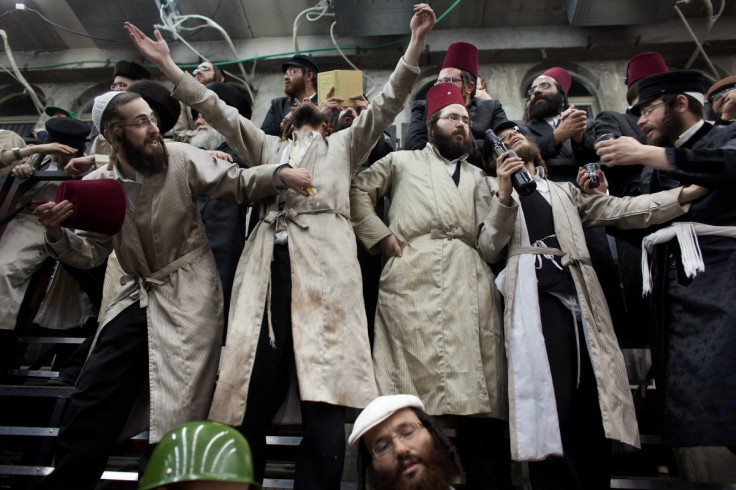Purim 2016: When does the Jewish holiday begin and what is the history behind it?

Jewish communities around the world are celebrating the annual holiday of Purim with food, parties and costumes – a celebration sometimes referred to as the Jewish Mardi Gras because of its carnival-style festivities. This year, the holiday begins on the evening of 23 March and ends on 24 March.
It is both a celebration and remembrance of Jewish survival in the ancient world. The story of Purim is told in the Book of Esther, an old biblical text, and details a plot by the prime minister of Persia to carry out genocide on the Jews under his authority.
What happens?
Purim is celebrated on the twelfth month in the Jewish calendar and often falls in March. Jews commonly greet each other by saying "Chag Purim Sameach", which is Yiddish for 'Happy Purim'. They also send each other "mishloach manot" – baskets of food and drinks.
Various dishes are specifically prepared for Purim, including hamantaschen (meaning 'Haman's pockets') – a type of sweet cookie filled with nut butter. A large braided bread called a challah is also eaten.
Another annual event, the Tel Aviv Purim Zombie walk, features people dressed up as zombies walking through the streets of the city. In 2016, the Zombie Walk will take place on 25 March from 9pm local time, from the corner of Ben-Zion Boulevard and King George.
There is a public recitation of the Scroll of Esther (known as the kriat ha-megillah) usually in a synagogue, in which special prayers are said. It is also customary to donate money to the poor at Purim, known as mattanot la-evyonim.
What is the story behind Purim?
According to the Jewish Virtual Library:
"The story of Purim is told in the Biblical book of Esther. The heroes of the story are Esther, a beautiful young Jewish woman living in Persia, and her cousin Mordecai, who raised her as if she were his daughter. Esther was taken to the house of Ahasuerus, King of Persia, to become part of his harem, and he loved her more than his other women and made her queen. But the king did not know that Esther was a Jew, because Mordecai told her not to reveal her nationality.
"The villain of the story is Haman, an arrogant, egotistical advisor to the king. Haman hated Mordecai because Mordecai refused to bow down to Haman, so Haman plotted to destroy the Jewish people. In a speech that is all too familiar to Jews, Haman told the king, "There is a certain people scattered abroad and dispersed among the peoples in all the provinces of thy kingdom; and their laws are diverse from those of every people; neither keep they the king's laws; therefore it does not profit the king to suffer them." Esther 3:8. The king gave the fate of the Jewish people to Haman, to do as he pleased to them. Haman planned to exterminate all of the Jews.
"Mordecai persuaded Esther to speak to the king on behalf of the Jewish people. This was a dangerous thing for Esther to do, because anyone who came into the king's presence without being summoned could be put to death, and she had not been summoned. Esther fasted for three days to prepare herself, then went into the king. He welcomed her. Later, she told him of Haman's plot against her people. The Jewish people were saved, and Haman was hanged on the gallows that had been prepared for Mordecai."

© Copyright IBTimes 2025. All rights reserved.





















